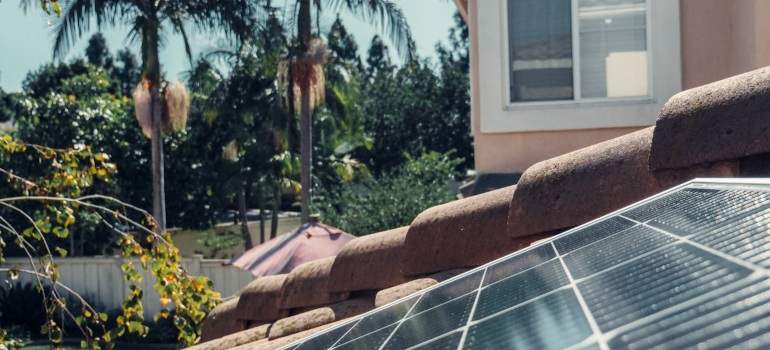Are you thinking about moving to an eco-friendly community? This decision goes beyond just finding a new place to live. It’s about embracing a lifestyle that prioritizes sustainability and environmental stewardship. Eco-friendly communities offer a unique blend of green living, community values, and modern conveniences. Let’s explore the key factors you should consider when making such a move to ensure that your new home aligns with your values and lifestyle.
Environmental Impact
When moving to an eco-friendly community, one of the biggest benefits is the positive environmental impact. These communities often use renewable energy sources like solar and wind power, and homes are usually equipped with solar panels and energy-efficient appliances. Waste management is another key area, with robust recycling programs and composting facilities for organic waste being common features. Water conservation methods are also a priority. Many communities have rainwater harvesting systems and efficient plumbing, including greywater systems, to reduce overall water usage.
Community Amenities
Eco-friendly communities offer a range of amenities that enhance your lifestyle and well-being. Green spaces and parks are abundant, providing access to nature and a peaceful environment. These areas are perfect for relaxation and outdoor activities, contributing to overall health.
Transportation options are designed with sustainability in mind. You’ll find bike lanes, walking paths, and electric car charging stations, making it easy to get around without relying on fossil fuels. A great example of sustainable transportation is Portland’s eco-friendly commuter services. These employee shuttles reduce traffic congestion and use alternative fuels that minimize air pollution.

Housing Options
In an eco-friendly community, housing options are designed with sustainability at their core. Many homes are energy-efficient, featuring high-quality insulation, energy-saving appliances, and smart home technologies that help reduce energy consumption. These homes are good for the environment and result in lower utility bills for residents.
Sustainable building materials are another important aspect. You might find houses constructed with recycled wood, eco-friendly paints, and other materials with minimal environmental impact. Likewise, homes in these communities often carry certifications such as LEED (Leadership in Energy and Environmental Design) or Energy Star ratings, which ensure they meet strict environmental standards.
Community Initiatives and Programs
Local sustainability projects like clean-up drives and tree-planting events offer a great way to get involved and make a tangible difference. Educational workshops on composting and water-saving techniques are also common, providing valuable knowledge to residents. For instance, in California, many communities participate in the state’s extensive recycling programs and drought-resistant landscaping projects, which help conserve water and promote environmental responsibility. There are also plenty of opportunities for resident involvement through volunteer programs and community meetings, fostering a sense of collective effort toward a greener future.
If you’re considering a relocation here, make sure you choose a moving company that aligns with your new community’s values to ensure a smooth, eco-friendly transition. For instance, hansensmovingandstorage.com, a moving company that has been operating in California for over 50 years, offers community-focused professional moving and storage services. Likewise, with their efficiency and experience, you can relocate quickly, reducing your move’s carbon footprint.
Cost of Living
When considering the cost of living in an eco-friendly community, it’s important to look at both short-term and long-term financial aspects. Initially, you might face higher upfront costs due to investments in green technology and sustainable building materials. However, these expenses often lead to significant long-term savings. For example, energy-efficient homes and renewable energy sources can lower utility bills and reduce maintenance costs.
Many eco-friendly communities also benefit from incentives and rebates, such as government grants and tax credits, which help offset initial expenditures. Thus, while the initial investment might be higher, the overall financial benefits make living in an eco-friendly community a cost-effective choice in the long run.

Social and Cultural Aspects
Living in an eco-friendly community often means embracing a unique social and cultural lifestyle. These communities are typically united by a shared commitment to sustainability, fostering a strong sense of collective purpose. The demographic diversity in such areas ensures an inclusive and varied community where people from different backgrounds contribute to a vibrant social fabric. Regular events and social gatherings, such as farmers markets and eco-fairs, provide opportunities for residents to connect, share ideas, and celebrate their commitment to green living. This supportive and engaging environment enhances your quality of life and strengthens community bonds.
Accessibility and Location
The accessibility and location of an eco-friendly community play a significant role in your daily life. Ideally, you’ll want to choose a community near essential services such as grocery stores, healthcare facilities, and schools, reducing the need for long commutes and minimizing your carbon footprint. Public transportation options, including buses and trains, should also be readily available, promoting sustainable travel methods. In addition, safety and walkability are essential considerations. Look for communities with well-maintained pedestrian-friendly paths and low crime rates, ensuring a safe and comfortable environment for residents to enjoy.
Health Benefits of Moving to an Eco-Friendly Community
Living in an eco-friendly community offers numerous health benefits that go beyond just environmental sustainability. Improved air quality is a notable advantage, thanks to reduced pollution levels and green spaces that promote cleaner, fresher air. Access to organic food through community gardens and local farmers markets contributes to a healthier diet, improving overall well-being. Also, the emphasis on active living encourages residents to engage in outdoor activities like walking, jogging, or cycling, promoting physical fitness and reducing the risk of lifestyle-related health issues.

Are you ready?
Moving to an eco-friendly community offers many benefits for individuals and the planet. By considering environmental impact, community amenities, housing options, and social aspects, you can make an informed decision that aligns with your values and lifestyle. These communities provide opportunities for sustainable living, community engagement, and a healthier way of life. With the accessibility of essential services, emphasis on environmental stewardship, and promotion of a vibrant social atmosphere, eco-friendly communities offer residents a fulfilling and enriching experience. Embrace the opportunity to be part of a greener future by choosing to make your home in an eco-friendly community.
